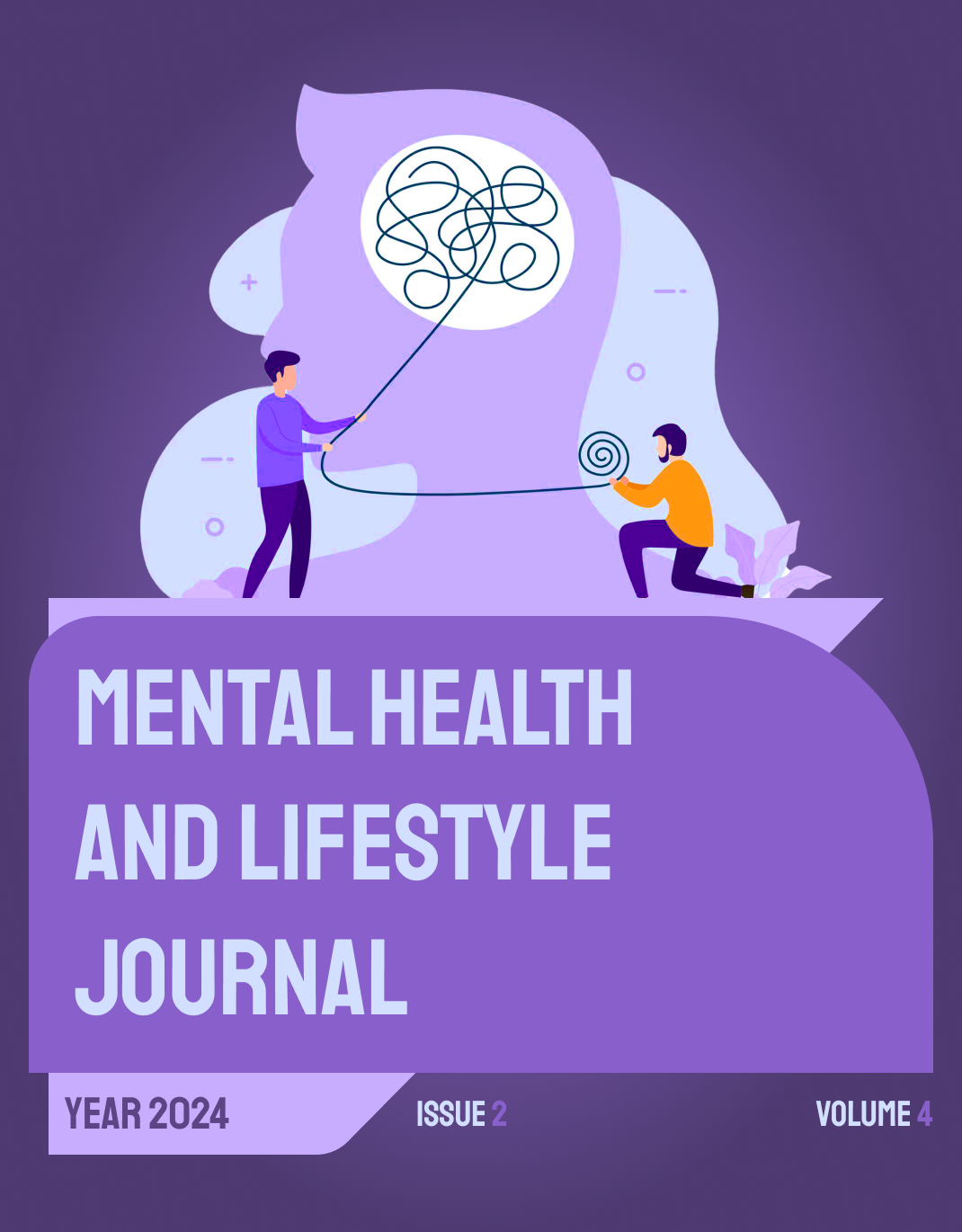The Relationship Between Emotion Suppression and Obsessive-Compulsive Disorder: The Mediating Role of Mindfulness
Keywords:
Emotion suppression, Obsessive-compulsive disorder, Mindfulness, Mediation, Structural equation modelingAbstract
This study aimed to investigate the relationship between emotion suppression and obsessive-compulsive disorder (OCD) symptoms, with mindfulness as a mediating variable in a non-clinical adult population. The research employed a descriptive correlational design. A total of 390 adult participants from Tehran were selected based on the Morgan and Krejcie sampling table using convenience sampling. Standardized self-report measures were used, including the Emotion Regulation Questionnaire (ERQ) for emotion suppression, the Five Facet Mindfulness Questionnaire (FFMQ) for mindfulness, and the Obsessive-Compulsive Inventory-Revised (OCI-R) for OCD symptoms. Data were analyzed using SPSS-27 for descriptive statistics and Pearson correlations, and AMOS-21 for structural equation modeling (SEM) to test the hypothesized mediation model. Descriptive results indicated moderate levels of emotion suppression (M = 18.74, SD = 4.89), average to high levels of mindfulness (M = 123.61, SD = 15.43), and elevated but non-clinical levels of OCD symptoms (M = 34.25, SD = 8.76). Emotion suppression was positively correlated with OCD symptoms (r = .52, p < .001), while mindfulness was negatively correlated with both emotion suppression (r = –.46, p < .001) and OCD symptoms (r = –.48, p < .001). The SEM analysis demonstrated good model fit (χ²/df = 2.19, RMSEA = 0.056, CFI = 0.95), and confirmed that mindfulness significantly mediated the relationship between emotion suppression and OCD symptoms. The indirect effect was statistically significant (β = 0.16, p < .001), indicating partial mediation. The findings suggest that mindfulness plays a protective and mediating role in the relationship between emotion suppression and OCD symptoms. Enhancing mindfulness may reduce the psychological impact of maladaptive emotion regulation strategies and serve as a valuable target in preventive and therapeutic interventions for OCD.
Downloads
References
1. Jansen M, Overgaauw S, Ellen RAdB. Social Cognition and Obsessive-Compulsive Disorder: A Review of Subdomains of Social Functioning. Frontiers in Psychiatry. 2020;11. doi: 10.3389/fpsyt.2020.00118.
2. Cole SN, Tubbs PMC. Predictors of Obsessive–compulsive Symptomology: Mind Wandering About the Past and Future. Psychological Research. 2021;86(5):1518-34. doi: 10.1007/s00426-021-01585-4.
3. K. Y. Behind the Scenes: Unmasking the Misrepresentation of Obsessive-Compulsive Disorder in Film and Television. International Journal for Multidisciplinary Research. 2024;6(5). doi: 10.36948/ijfmr.2024.v06i05.29274.
4. Yani F, Samanik S. Obsessive Compulsive Disorder as Seen in the Main Character of Every Last Word Novel by Tamara Ireland Stone. Jae. 2023;3(1). doi: 10.33365/jae.v3i1.202.
5. Fayz KS, Nik AY, Ghasemzadeh S, Dahooyi TGM. Effectiveness of Mindfulness-Based Stress Reduction Program on Emotion Regulation and Obsessive-Compulsive Symptoms of Children With Obsessive-Compulsive Disorder. Aftj. 2023;4(3):79-92. doi: 10.61838/kman.aftj.4.3.6.
6. Mohamed M, Ahmed R. The Relationship Between Mind Wandering and Vulnerability of Obsessive-Compulsive Disorder: Self-Regulation as a Moderator. Ijps. 2024;4(2):38-47. doi: 10.11648/j.ijps.20240402.13.
7. Wang P, Cao W, Chen T, Gao J, Liu Y, Yang X, et al. Mediating Role of Rumination and Negative Affect in the Effect of Mind-Wandering on Symptoms in Patients With Obsessive-Compulsive Disorder. Frontiers in Psychiatry. 2021;12. doi: 10.3389/fpsyt.2021.755159.
8. Leeuwerik T, Cavanagh K, Strauss C. The Association of Trait Mindfulness and Self-Compassion With Obsessive-Compulsive Disorder Symptoms: Results From a Large Survey With Treatment-Seeking Adults. Cognitive Therapy and Research. 2019;44(1):120-35. doi: 10.1007/s10608-019-10049-4.
9. Asgharnezhad R, Vafa MA, Abdi R. Predicting Symptoms of Obsessive-Compulsive Disorder Based on Cognitive Beliefs and Mindfulness in a Non-Clinical Population. Jarac. 2023;5(2):107-15. doi: 10.61838/kman.jarac.5.2.13.
10. Shitole RB, Thakkar H. Correlation Between Obsessive Compulsive Symptoms & Mindfulness Among Undergraduate Occupational Therapy Students (Ug Ot ). Pijr. 2021:1-3. doi: 10.36106/paripex/5907146.
11. Torres LC, Filho FJF, Pereira TS, Pedro Lucas de Oliveira P, Lima V, Giliara Carol Diniz Gomes de L. Mindfulness as Adjuvant Treatment for Obsessive‐Compulsive Disorder: An Integrative Review. Revista Portuguesa De Psiquiatria E Saúde Mental. 2023;9(2):58-65. doi: 10.51338/rppsm.290.
12. Mahmoudi A, Heshmati R, Alilou MM. Prediction of Obsessive-Compulsive Symptoms Based on Negative Affect, Rumination, and Dispositional Mindfulness. Journal of Educational Health and Community Psychology. 2020;9(2). doi: 10.12928/jehcp.v9i2.13028.
13. Almeida RdS, Oliveira OMd. The Mindfulness Technique for Treatment of Ocd. Health and Society. 2023;3(02):414-56. doi: 10.51249/hs.v3i02.1303.
14. Azad MA, Manshaei G, Ghamarani A. The Effect of Mindfulness Therapy on Tolerance of Uncertainty and Thought-Action Fusion in Patients With Obsessive-Compulsive Disorder. Quarterly Journal of Child Mental Health. 2019;6(1):83-94. doi: 10.29252/jcmh.6.1.8.
15. Moghadam PA, Atashpour SH, Golparvar M. Comparison of the Effectiveness of Integrated Schema Therapy and Mindfulness Intervention With Schema Therapy and Cognitive Behavioral Intervention on Obsessive-Compulsive Symptoms in Women With Obsessive-Compulsive Syndrome. PDMD. 2023;2(4):153-66. doi: 10.61838/kman.pdmd.2.4.15.
16. Poletti M, Gebhardt E, Raballo A. Along the Fringes of Agency: Neurodevelopmental Account of the Obsessive Mind. CNS Spectrums. 2021;27(5):557-60. doi: 10.1017/s1092852921000560.
17. González-Tarno P, Navas-García M, Torio I, Alén JF, Torres CV. Deep Brain Stimulation for Obsessive-Compulsive Disorder. Brain Network and Modulation. 2023;2(2):28-35. doi: 10.4103/2773-2398.379338.
18. Ebrahem SM, Abd-elwahab SD, Shokr EA, Radwan HA. Effectiveness of Mindfulness Skills on Self-Efficacy and Suicidal Ideation Among First-Year Nursing Students With Obsessive-Compulsive Symptoms During COVID-19 Pandemic. International Egyptian Journal of Nursing Sciences and Research. 2022;3(1):221-39. doi: 10.21608/ejnsr.2022.247075.
19. Khanghah HB, Samkhaniani E. Comparison of Cognitive Behavioral Therapy and Mindfulness-Based Therapy on Relational Obsessive-Compulsive Disorder and Fear of Intimacy in Female Students. Jayps. 2024;5(6):12-21. doi: 10.61838/kman.jayps.5.6.2.
20. Mohammadnejad E, Arshadi FK, Hasani F. Comparison of the Effectiveness of Exposure and Response Prevention (ERP) With Mindfulness-Based Cognitive-Behavioral Therapy (MBCBT) on Obsessive-Compulsive Syndrome and Depression in Women With Obsessive-Compulsive Disorder. The Journal of Psychological Science. 2022;20(108):2269-84. doi: 10.52547/jps.20.108.2269.
21. Li Y, Shi H, Xue Y. Basic Cognition and Misunderstanding of Obsessive-Compulsive Disorder. 2022:1556-62. doi: 10.2991/978-2-494069-31-2_183.
22. El-Gawad AMSA, Elbatrawy A, Shorub E, Ramadan M, Elkhatib H. Autistic Traits and Obsessive-Compulsive Personality Traits in OCD Patients. Middle East Current Psychiatry. 2022;29(1). doi: 10.1186/s43045-022-00213-0.
Downloads
Published
Submitted
Revised
Accepted
Issue
Section
License

This work is licensed under a Creative Commons Attribution-NonCommercial 4.0 International License.










